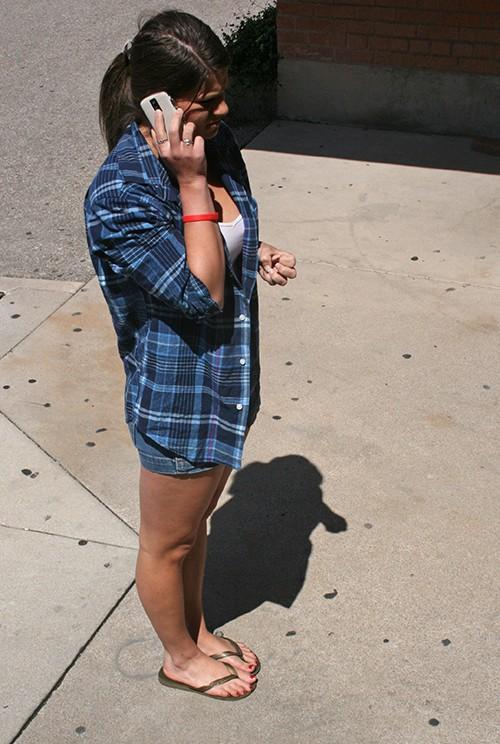Students have returned from spring break with bronze skin, ready to visit the pool as the warm temperatures rise.
Ultraviolet light causing skin cancer is not a new discovery, yet people continue trying to achieve the “”perfect tan”” during the sunny seasons. Whether lying in tanning beds or in the sun, the same dangers are present.
Students probably tan because they want to look good, said Caroline Mills, a pre-nursing freshman. Mills said she wears sunscreen and doesn’t care to go tanning.
“”Some people feel like they look better if they’re tan,”” said Erin Gazecki, a psychology freshman.
Gazecki said tanning is relaxing and feels good on her skin. She occasionally tans outside, but not in tanning beds.
“”There’s no amount of sunlight or ultraviolet that’s totally safe,”” said Dr. Robert Segal, a dermatologist at the Dermatology Center in Tucson.
Tanning ages the skin and increases the risk of skin cancer, he said. While non-melanoma skin cancers are most common, melanoma cancers are more dangerous, Segal said. Segal sees approximately 25 non-melanoma cancers a day and one melanoma cancer a week.
Melanoma, which is the most dangerous type of skin cancer, can spread to different places such as the heart or the brain, sometimes without warning.
“”It’s just so scary because young people can get it,”” Segal said. “”It’s frightening.””
Melanoma occurs mostly in older people but can also occur in children, teens and adults in their 20s, he said. Non-melanomas occur almost exclusively in older people.
A child born today in America has about a one in 67 chance of getting melanoma during his or her lifetime, Segal said. This is a high risk, he said, but melanomas are luckily being caught earlier.
“”I work at a clinic with a lot of high-risk skin cancer patients and a lot of them used tanning beds when they were younger,”” said Lisa Quale, the health educator at the Skin Cancer Institute, “”and they’re thinking that’s probably where their skin cancers are coming from now.””
Non-melanoma skin cancers are generally sores that don’t heal, Segal said. The sores tend to be located where the sun hits the hardest, such as the face, neck and back.
Basal cell carcinoma and squamous cell carcinoma are the two most common non-melanoma cancers, according to Segal. They are less aggressive than melanoma and affect different layers of the skin, Quale said. Generally, they don’t metastasize to other parts of the body, but squamous cell carcinoma has shown to do so on occasion.
A dark brown or black spot that changes color is a sign of melanoma. Sometimes other colors such as red, white or blue are present, Segal said. Melanoma usually develops on fresh skin but it can also develop from a pre-existing mole.
If someone already had a non-melanoma cancer, the chances of it coming back depend on how it was removed. For example, if it was scraped out, the cure is 98 to 99 percent successful, Segal said.
“”With melanomas, it depends on the depth, and how good the treatment was on the first pass,”” he said. “”About one out of 11 people with melanoma will die from it.””
Someone who has already had melanoma is very likely to get it again, Segal said, and it constantly needs to be monitored. After the treatment is finished, the patient has to come in every three months for several years to make certain the melanoma doesn’t come back, he said.
Segal said if someone has tan skin, they are getting too much sun.
“”That tan is a protective mechanism, it’s not a beauty secret,”” he said, “”it’s a skin response to the harmful ultraviolet rays of telling the little pigment cells to make more pigment.””
The most dangerous time to be in the sun is mid-summer at noon, Segal said.
“”If you’re standing up on level ground and your shadow is shorter than yourself, the sun is dangerous,”” he said.
Quale recommends that people stop tanning and try spray tans as an alternative. Segal’s advice is that people wear sunscreen with a sun protection factor of 30 or more that has both chemical and physical blockers. He also gave advice for people that frequently tan.
“”Save your money, because you’re going to need to see the dermatologist,”” Segal said. “”You’re going to get skin cancers and you’re going to prematurely show aging.””








